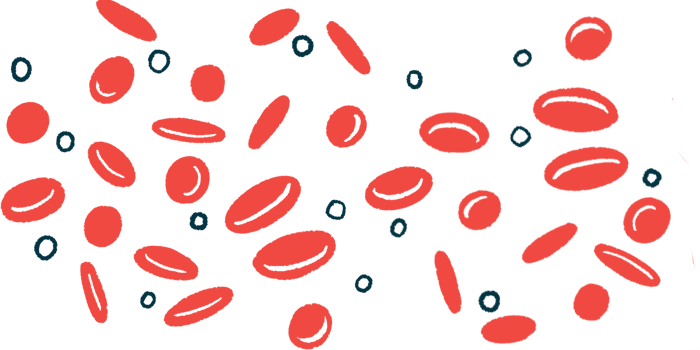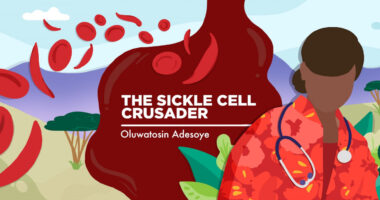1 Possible Cause Ruled Out for Increased Blood Cancer Risk in SCD

Researchers have ruled out a phenomenon called clonal hematopoiesis as the potential cause of the increased risk of blood cancer in people with sickle cell disease (SCD) by analyzing the genetic data of more than 3,000 SCD patients and 71,000 unaffected people.
In clonal hematopoiesis, people acquire mutations that cause some of their hematopoietic stem cells — cells that can give rise to all types of blood cells in the body — to multiply faster than others. This results in the formation of cell populations or “clones” with a different genetic pattern to the rest of the blood cells.
For scientists, the finding eliminates one possible cause for the higher risk.
“This tells us that monitoring patients with sickle cell disease for clonal hematopoiesis, at least at levels we can detect with whole genome sequencing, is not going help us figure out the basis for the elevated cancer risk,” Vijay Sankaran, MD, PhD, the study’s senior author and an attending physician at Dana-Farber/Boston Children’s Cancer and Blood Disorders Center, said in a press release.
David A. Williams, MD, one of the study’s authors and the chief of hematology/oncology at Boston Children’s Hospital, said that “these new data contribute significantly to the ongoing discussions about [blood cancer] risk in individuals with sickle cell disease.”
Given that previous cases of blood cancers in some SCD patients treated with experimental gene therapies were deemed unrelated to the therapy’s viral carriers, Williams added, “it is critical that the field understands this risk more completely so we can improve the safety of our gene therapy approaches for these patients.”
Williams also is a co-principal investigator of a Phase 1 trial (NCT03282656) testing BCH-BB694, a gene therapy candidate for SCD, and that has provided positive interim results.
The new findings were detailed in a study titled “Clonal hematopoiesis in sickle cell disease,” published in The Journal of Clinical Investigation.
People with SCD are estimated to have a 3–10 times higher risk of developing blood cancers, with older age being associated with a greater risk. This has recently gained increasing interest “due to a number of reports of [blood cancers] arising during gene therapy that have halted several ongoing clinical trials,” the researchers wrote.
While such trials were subsequently resumed after evidence suggested the cancer cases were unlikely to be related to the therapy, the reasons behind these cases and SCD patients’ increased risk of blood cancer remained unclear.
“As a hematologist, I’m tremendously excited by gene therapy and the prospect of curative treatments for my patients,” Sankaran said.
“But for patients, cancer risk is a worry,” he said.
Clonal hematopoiesis was suggested as a factor for this higher risk, as it “can increase the risk of blood cancers by up to 10-fold,” Sankaran said.
“It’s been speculated that people with sickle cell disease may have a higher rate of clonal hematopoiesis, and that we should consider screening patients for it before enrolling them in gene therapy trials — or even if they aren’t getting gene therapy,” he added.
While clonal hematopoiesis “may play a role in SCD-associated cancer predisposition, limited data addressing this issue have been reported,” the researchers wrote.
To address this, Sankaran and his team, along with colleagues at other institutions in the U.S. and Brazil, assessed the rate of clonal hematopoiesis among 3,090 SCD patients, ages up to 70 years, and 71,100 people without the disease, who served as controls.
All of these individuals had participated in studies from the National Heart, Lung and Blood Institute Trans-Omics for Precision Medicine consortium, in which their genome, or genetic make-up, was analyzed.
In the current study, Sankaran and the other researchers used these genetic data to look for somatic mutations — those acquired during embryonic development and not inherited from parents — and clonal blood cell populations. The analysis was powered to detect a greater than twofold increased rate of clonal hematopoiesis between groups.
Results showed that clonal hematopoiesis was present in 27 SCD patients and 3,063 unaffected individuals, and its frequency increased with age in both groups.
While there was a trend for a higher risk of clonal hematopoiesis among SCD patients relative to controls, this difference failed to reach statistical significance, even when adjusted for multiple potentially influencing factors.
Similar results were obtained when the team compared data of SCD patients with those of a group of controls that were as similar as possible to the SCD cases.
In addition, the team found no increased rate of clonal hematopoiesis among SCD patients treated with the standard treatment hydroxyurea, which was previously suggested to increase the risk of blood cancer in these patients.
These findings, suggesting that clonal hematopoiesis is not behind SCD-associated increased risk of blood cancer, are in contrast to data from the single other study that investigated clonal hematopoiesis in SCD patients to date.
Involving more than 1,400 SCD patients and nearly 7,000 unaffected African Americans, the previous study reported a higher frequency of clonal hematopoiesis among SCD patients.
Notably, the current study was not sensitive enough to detect small clonal populations involving rare mutations, the team noted.
These rarer clones may become more common “as a result of the way cells are handled or processed in gene therapy” or could be resistant to, and thereby selected by, the chemotherapy regimens given before gene therapy, Sankaran said.
“Until we study this, we won’t know. Gene therapy is still experimental, and there are probably things we’re going to learn,” Sankaran added.
These hypotheses will be the focus of future research as part of a large collaborative effort through the National Heart, Lung, and Blood Institute’s Cure Sickle Cell initiative.
Williams and Erica Esrick, MD, a co-principal investigator of the BCH-BB694 gene therapy trial, also are collaborating with investigators in the U.K. to study the effects of cell processing on the possible development of mutations in gene therapy recipients.
Still, the underlying reason for the increased risk of blood cancer in SCD, especially with increasing age, remains unclear.
“As people live longer with sickle cell disease, we have to be more aware of the long-term cancer risk,” Sankaran said. “We need to learn more about these malignancies and start discussing this risk.”








